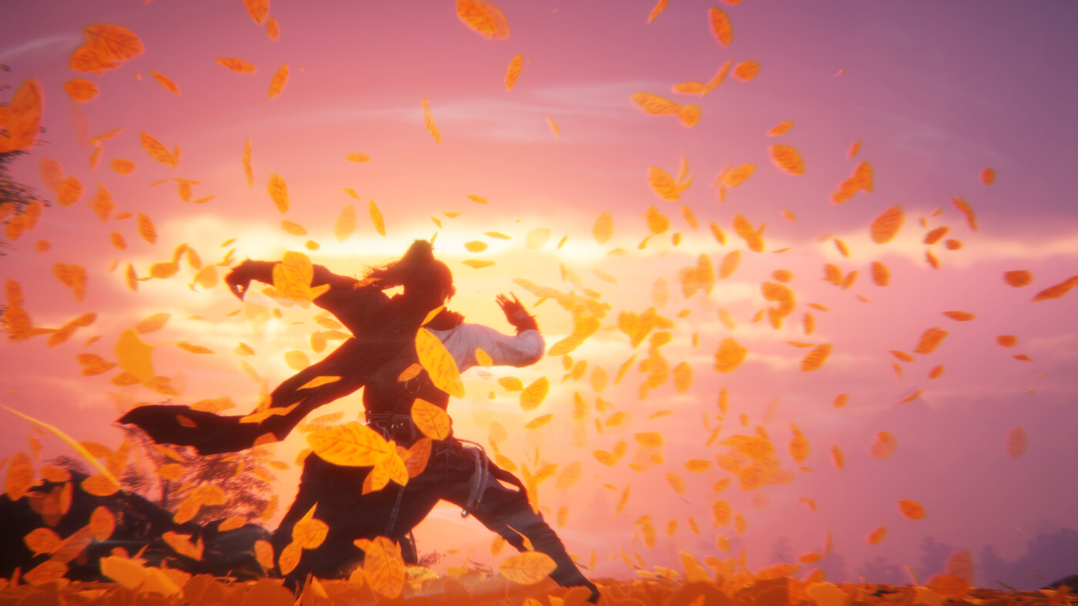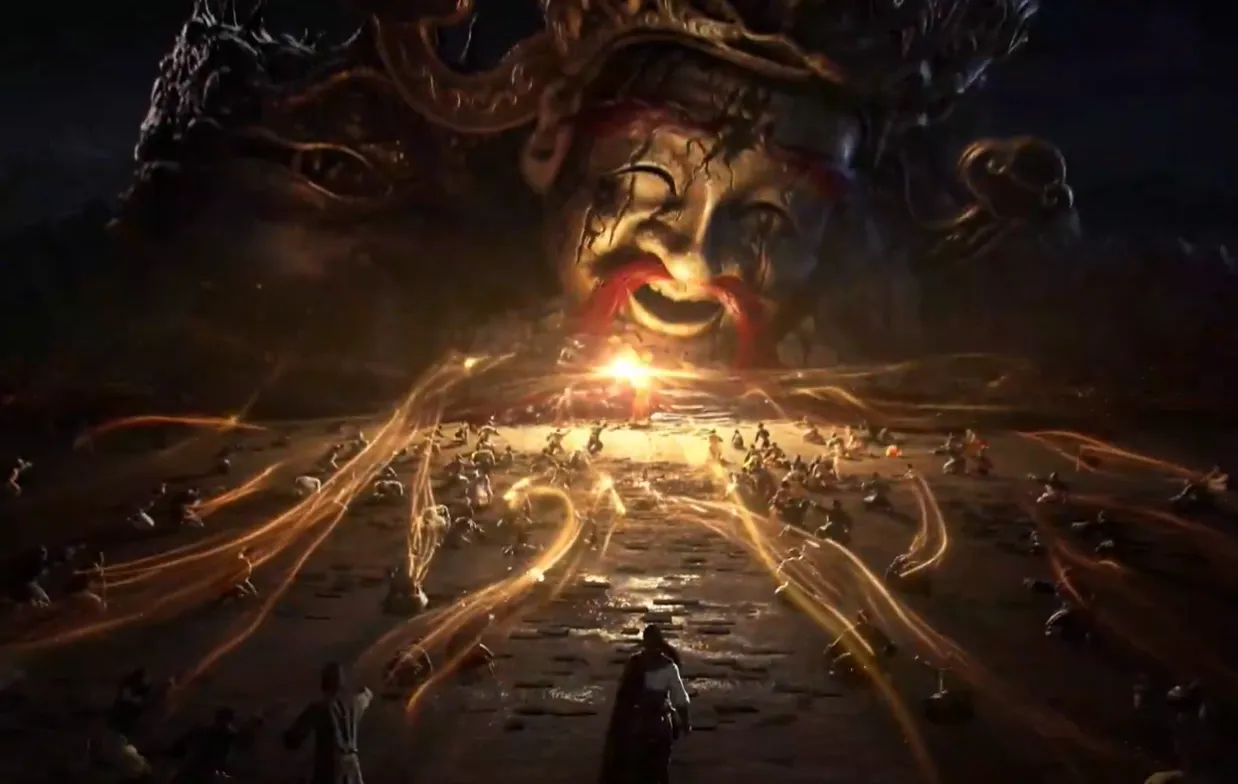The Yin Yang Dial in Where Winds Meet looks like a wall of Daoist poetry, but the underlying logic is simple: two statues must face each other, two must look away, and the central disc decides which pair is “locked” at any moment. Once that clicks, the Cries in the Distance quest stops being a brick wall and turns into a short detour on the way to a bear-flinging lesson in Tai Chi.
Where the Yin Yang Dial puzzle fits in the quest
The puzzle sits at the center of the Cries in the Distance side quest in Qinghe’s Moonveil Mountain region, under the Peace Bell Tower / Moonveil Peak pagoda.
The rough flow looks like this:
| Stage | What you do | Why it matters |
|---|---|---|
| 1. Find the voice | From the pagoda entrance, walk out, drop to the big tree branch, then drop again into a nook with a hatch. | Gets you into the sealed cave where Feng Jisheng is trapped. |
| 2. Free Feng | Use a fire arrow to burn vines blocking a doorway and stand on the floor ring/pressure plate. | Lifts the stone wall that’s pinning Feng and exposes the main chamber. |
| 3. Reveal the dial | Stand on one Bagua circle while Feng stands on the other. | The central Tai Chi platform rises, revealing the Yin Yang Dial puzzle. |
| 4. Solve the dial | Rotate four outer statues and the central disc to meet the Heaven–Earth / Water–Fire conditions. | Opens the shaft down to the lower chamber. |
| 5. Explore & read | Drop down with Mighty Drop, investigate texts and objects, then open another stone gate with Feng. | Fills in story about Tian Ying and advances the side story chain. |
| 6. Fight the bear | Use Tai Chi Mystic Art to throw the Thick-Skinned Albino Black Bear into three boulders. | Completes the quest and unlocks multiple chests and progression rewards. |
Everything in the middle depends on understanding how the four pillars and the Yin–Yang disc talk to each other.
How the Yin Yang Dial actually works
The room is laid out like a giant Tai Chi diagram sitting inside an Eight Trigrams (Bagua) ring. In mechanical terms, you are dealing with:
| Element | In-game object | Behavior |
|---|---|---|
| Central disc | Large Yin–Yang / Tao pillar in the middle | Rotates to shift which pair of statues is “bound” together. |
| Outer statues | Four rotatable pillars with dragon heads | Two rotate independently (Heaven & Earth), two mirror each other (Water & Fire) until you change bindings. |
| Binding markers | Two small circles on the ring around the disc | Whichever two statues these circles line up with become the “linked” pair. |
| Feedback | Mist/energy trails on the floor | When one axis is correct, a faint mist line appears between those statues. |
The game wraps this in Daoist language:
- Heaven and Earth: a pair of opposite statues that can move independently once bound correctly.
- Water and Fire: the other opposing pair that initially rotates together until you rebind them.
Two axes are involved:
- On one axis, the two statues must look directly at each other (dragons facing inward).
- On the other axis, the statues must look away from each other (dragons turned outward).
When you rotate the central Tao pillar, you are not just spinning decoration; you are sliding those two floor circles around the ring. Wherever they stop decides which opposite pair is “locked” together for the next round of rotations.
Detailed solution: Cries in the Distance Yin Yang Dial
The underlying requirements are consistent even if the starting orientation is slightly different between runs. The cleanest way to solve it is to treat Heaven/Earth and Water/Fire as two separate passes.
1. Identify Heaven, Earth, Water, and Fire
The game and several in-quest hints describe the four pillars as:
| Pillar label | Behavior | Practical meaning |
|---|---|---|
| Heaven (1) | Can move without dragging an opposite along when correctly bound. | One of the “independent” pair. |
| Earth (3) | Same as Heaven, on the opposite side of the ring. | The other “independent” pillar. |
| Water (2) | Rotates together with its opposite by default. | One of the “linked” pair. |
| Fire (4) | Mirrors Water’s movement by default. | The other “linked” pillar. |
You do not need the on-screen labels to solve it. You can simply test:
- Rotate any pillar. If its opposite rotates as well, you are touching either Water or Fire.
- Rotate another pillar. If the opposite stays still, you are on Heaven or Earth.
Once you know which pair is independent and which is linked, the rest is just binding and orientation.
2. First axis: set Heaven and Earth to face each other
Start by arranging the independent pair so they face each other, and then bind them via the Yin–Yang dial.
| Step | Action | What you should see |
|---|---|---|
| 2.1 | Rotate the central Yin–Yang disc once clockwise (or until the small floor circles line up with the independent pair). | The two binding circles should now sit in front of the Heaven and Earth statues. |
| 2.2 | Rotate each of these two statues so their dragon heads point toward the center and toward each other. | The dragons on this axis should be nose-to-nose, both pointing inward toward the disc. |
| 2.3 | Fine-tune until a faint, grey mist appears along the floor between them. | The mist line signals that axis is now correctly configured and locked in place. |
Once this is done, Heaven and Earth are effectively “fixed”. Rotating the disc again will change which pillars are treated as the Water–Fire pair for the next move, but this inward-facing axis will remain correct.
3. Second axis: set Water and Fire to face away
Now you need the remaining two statues to look away from each other, representing Water and Fire’s opposing nature.
| Step | Action | What you should see |
|---|---|---|
| 3.1 | Rotate the Yin–Yang disc again until its two circles line up with the remaining pair of statues (Water and Fire). | The binding circles should sit in front of the statues that previously rotated together. |
| 3.2 | Rotate one of these two statues so its dragon head points outward, away from the center. | The dragon should look toward the outer wall, not toward the disc. |
| 3.3 | Rotate the opposite statue so its dragon also points outward, in the opposite direction of its partner. | On this axis, both dragons are turned away from each other as well as from the center. |
| 3.4 | Adjust until the floor shows another misty trail along this second axis. | The full ring should now feel “alive”, with both axes emitting subtle energy lines. |
When both conditions are met—one axis facing in, one facing out—the central mechanism sinks into the ground, opening the vertical shaft to the lower chamber.
Alternative description: solving by dragon heads only
If the elemental labels feel abstract, you can ignore them and treat everything as a pure orientation puzzle driven by the dragon head carvings:
- Pick any statue and rotate it so the dragon faces the disc.
- Find the statue directly opposite. Rotate it until its dragon also faces the disc and the first dragon.
- Spin the central disc until its two floor circles sit under this inward-facing pair. That pair is now “locked”.
- Go to the other two statues. Rotate them so both dragons face away from the disc and away from each other.
If done correctly, you never need to think about the named elements at all; you simply create an inward-facing axis and an outward-facing axis, then let the disc bind them one at a time.

What happens after the Yin Yang Dial opens
When the puzzle completes, the Tai Chi platform retracts, revealing a drop into a second chamber. From here, the quest branches into story beats and a mechanics tutorial.
| Phase | Location | What to do | Why it matters |
|---|---|---|---|
| 4.1 | Hidden study below the dial | Use Mighty Drop to land safely, then examine dusty bookshelves, letters, scattered texts, and a strange stone ring. | Reveals backstory around Tian Ying and the purpose of the formation. |
| 4.2 | Stone gate between lanterns | Follow Feng to a wall with a groove, slot the jade piece, and interact to raise the gate. | Opens a path deeper into the mountain. |
| 4.3 | Training ground / arena | Approach the open area to trigger the Thick-Skinned Albino Black Bear encounter. | Leads directly into the Tai Chi Mystic Art tutorial fight. |
In the arena, normal weapon damage is not the focus. The fight is structured around using the Tai Chi Mystic Skill to grab the bear’s momentum and slam it into three stone piles (right, left, and forward). Each successful throw both injures the bear and collapses part of the arena wall, exposing chests. After three impacts, the bear goes down, and you collect a large batch of rewards, including Jade Fish, Enlightenment, martial mastery, exploration mastery, Echo Jade, Zhou Coin, and gear from the chests.
Once the bear is handled and the loot collected, one last conversation with Feng Jisheng closes Cries in the Distance and sets up his broader role in the Moonveil Mountain storyline.
The Yin Yang Dial looks like an abstract philosophy lesson, but it boils down to a single rule set: lock one opposite pair facing in, spin the world so the other pair can face out, and let the mechanism do the rest. Once that pattern is clear, future encounters that riff on Tai Chi, Bagua, or elemental opposites in Where Winds Meet feel far less opaque, and a lot more like the martial riddles they’re meant to be.


